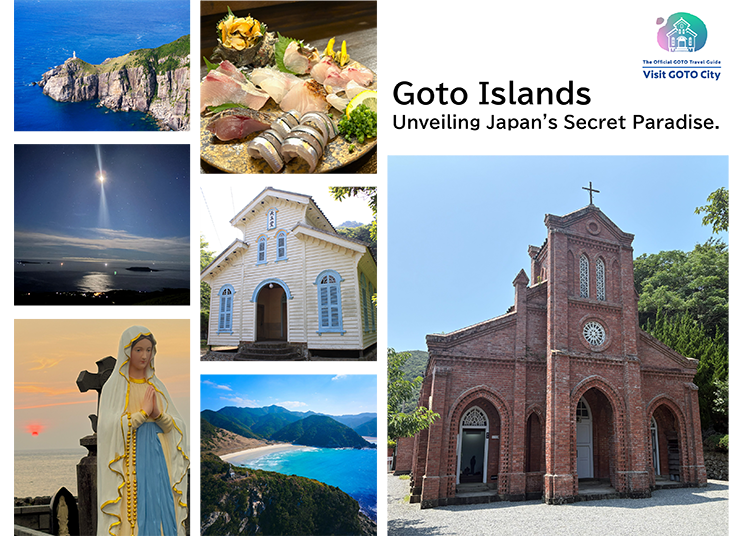
Walk in the Footsteps of Believers: A 4-Day Pilgrimage Across Goto City
- Written by: Yohei Kato
Just off the coast of Kyushu, the Goto Islands are a cluster of over 150 islands scattered across the deep blue sea west of Nagasaki. At their heart lies Goto City, a laid-back destination made up of three main islands—Fukue, Naru, and Hisaka—plus dozens of smaller islets. Despite its remote beauty, Goto is surprisingly easy to reach: just 40 minutes by plane from Fukuoka or 30 minutes from Nagasaki.
The islands are blessed with stunning coastal scenery, gentle weather averaging around 17°C (63°F) year-round, and fresh local dishes that showcase the bounty of both land and sea. What makes Goto especially fascinating, though, is its rich history. Sitting roughly halfway between Japan, China, and Korea, these islands once served as an important maritime gateway to Asia.
Today, Goto is known not only for its natural beauty but also for its deep spiritual heritage. Two of its historic churches are part of the Hidden Christian Sites in the Nagasaki Region, designated as a UNESCO World Heritage site in 2018.
In this article, we’ll trace the footsteps of Goto’s hidden Christians and take you through a four-day journey filled with breathtaking landscapes, meaningful encounters, and local flavors you won’t forget.
- Table of Contents
-
- Getting to Goto and What to Expect
- Goto Trip: Day 1 – First Stops to Discover the Islands
- Goto Trip: Day 2 – Visit World Heritage Sites on Naru Island and Discover History and Cuisine on Fukue Island
- Goto Trip: Day 3 – Tracing the Suffering and Hope Engraved on Hisaka Island
- Goto Trip: Day 4 – Discover Goto’s Majestic Nature and Find the Perfect Souvenir
- Goto City: An Undiscovered Paradise Where Faith and Nature Unite
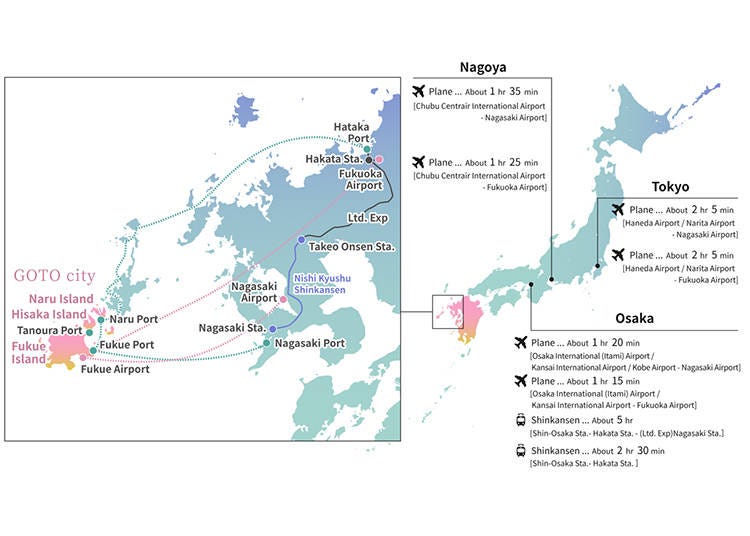
- Day 1: Visit the must-see attractions in Goto
- Day 2: Explore the World Heritage site on Naru Island and enjoy local history and cuisine on Fukue Island
- Day 3: The suffering and hope engraved on Hisaka Island
- Day 4: Explore Goto’s grand nature and hunt for unique souvenirs
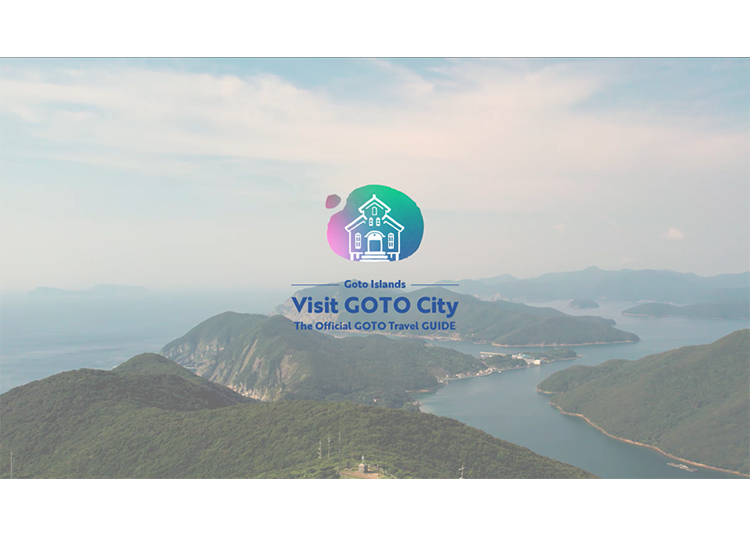
Getting to Goto and What to Expect
There are several ways to reach Goto, but flying is the fastest and most convenient. Flights to Goto Fukue Airport take about 40 minutes from Fukuoka Airport, the largest city in Kyushu, and around 30 minutes from Nagasaki Airport. Morning and afternoon flights are available, making it easy to fit your journey into your plans. As the plane descends, you’ll be treated to a breathtaking view of the deep blue sea and the many islands scattered below.
For those who prefer to travel at a slower pace, going by sea is also a great option. The Jetfoil high-speed ferry from Nagasaki Port to Fukue Port takes about 85 minutes, with multiple departures from early morning to evening. This allows plenty of time to enjoy sightseeing in Nagasaki before heading to the islands. Some travelers also combine both options by flying in and returning by ferry for a different view of the islands.
There are no trains on the Goto Islands, so most people get around by car or bus. Visitors with a driver’s license can rent a car on each island, with rental offices available at airports, ports, and hotels. Since demand increases during summer holidays and local events, it is best to make a reservation in advance.
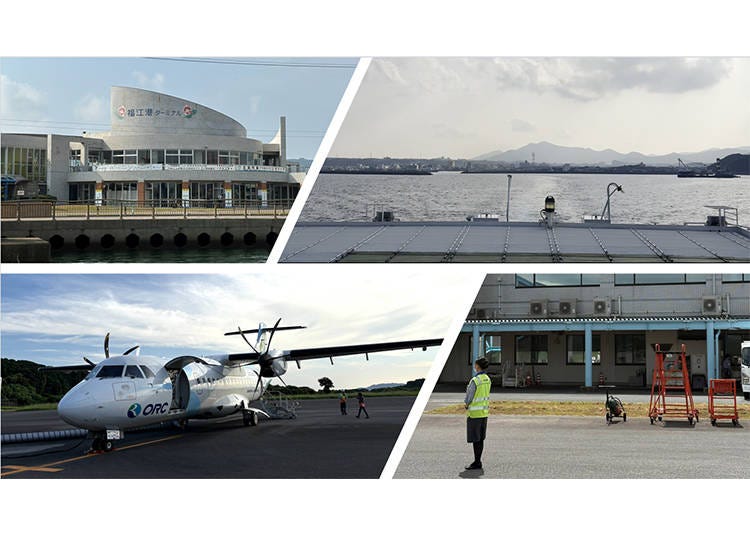
Thanks to the warm Tsushima Current, Goto enjoys a mild climate throughout the year, with an average temperature of about 17 to 18.5°C (63 to 65°F). Even in summer, it remains pleasantly cool compared to mainland Japan, with average temperatures between 22°C (72°F) and 27°C (81°F). The rich natural environment, warm ocean currents, and fertile soil make the region abundant in seafood, vegetables, and livestock. This variety of fresh local ingredients is one of Goto’s greatest delights and a highlight for any visitor.
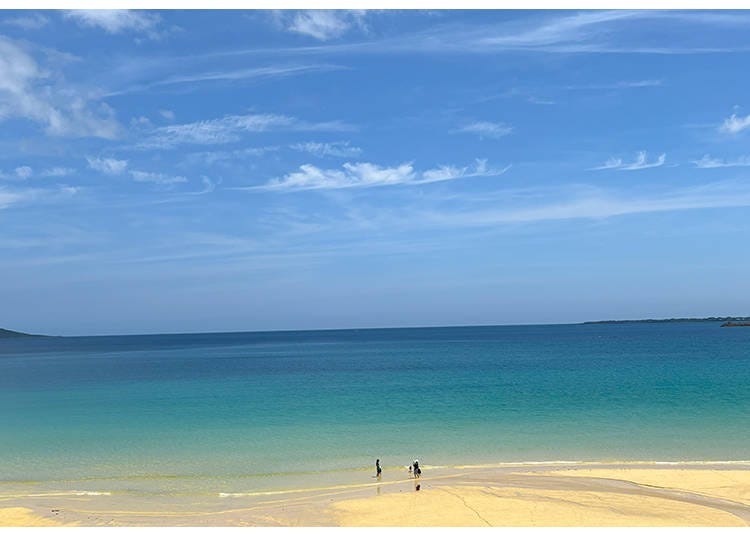
Goto Trip: Day 1 – First Stops to Discover the Islands
When you arrive in Goto, one of the first things you may wonder is how these islands came to be. Surrounded by sea to the west with no large land between Japan and China, Goto’s origins are a fascinating story in themselves. To learn more, start your journey at the Abunze Visitor Center, about 15 minutes south of Goto Fukue Airport.
The entire Goto area lies within Saikai National Park and was designated as the Goto Islands (Shimogoto Area) Geopark in January 2022. The Abunze Visitor Center serves as the main hub for learning about the region’s geology, history, and natural environment in an easy and interactive way. Large screens display English-language videos explaining not only how Goto was formed but also how Japan itself took shape. With its relaxed atmosphere and free Wi-Fi rest area where visitors can bring their own snacks, it makes for a perfect first stop after landing.
-
Abunze Visitor Center鐙瀬ビジターセンター
- Address 1333-3 Nonokirecho, Goto, Nagasaki 853-0024
Mapcode: 334 206 569*41
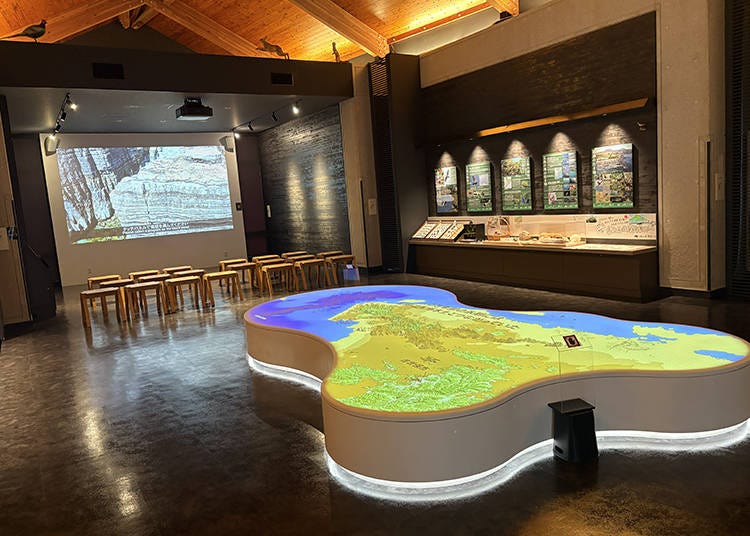
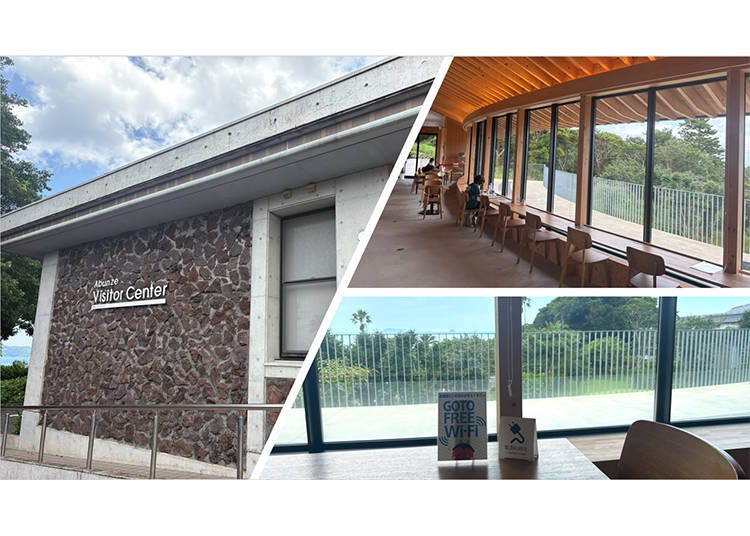
If you want to learn more about Goto’s past, head to the Goto Tourism and History Museum. The highlight is on the third floor, where an immersive theater presents the story of the hidden Christians through vivid visuals and English narration. You will gain a deeper understanding of how local believers preserved their faith for over 250 years during the Tokugawa shogunate’s ban on Christianity.
-
Goto Tourism and History Museum五島観光歴史資料館
- Address 1-4 Ikedamachi, Goto, Nagasaki 853-0018
Mapcode: 334 386 806*64
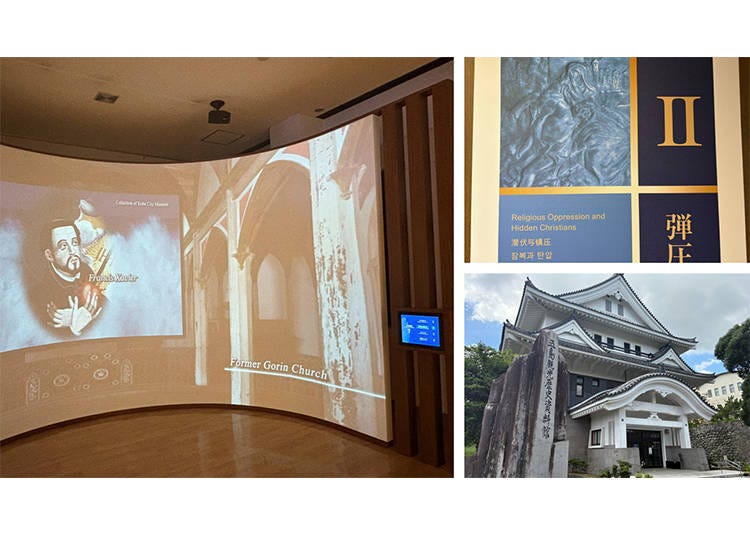
Once you finish exploring the exhibits, it is time for lunch. A must-try local specialty is Goto udon, said to have originated from noodle-making methods brought over by envoys traveling between Japan and Zhejiang Province in China in the 8th and 9th centuries. These hand-stretched noodles are coated with camellia oil, giving them a silky texture and smooth taste. The broth, made with locally caught flying fish, adds a deep and savory flavor. One popular spot to enjoy Goto udon is Onidake Shiki no Sato, located across from the Onidake Observatory near Fukue Airport, though you can find it at many restaurants across the islands.
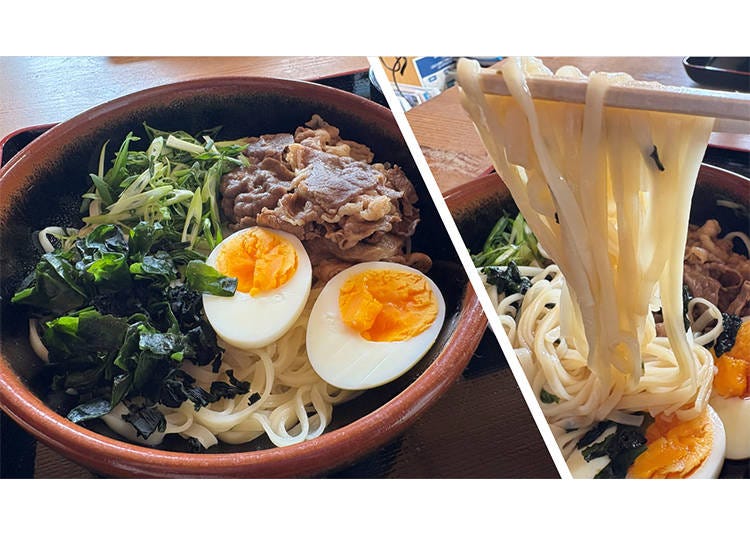
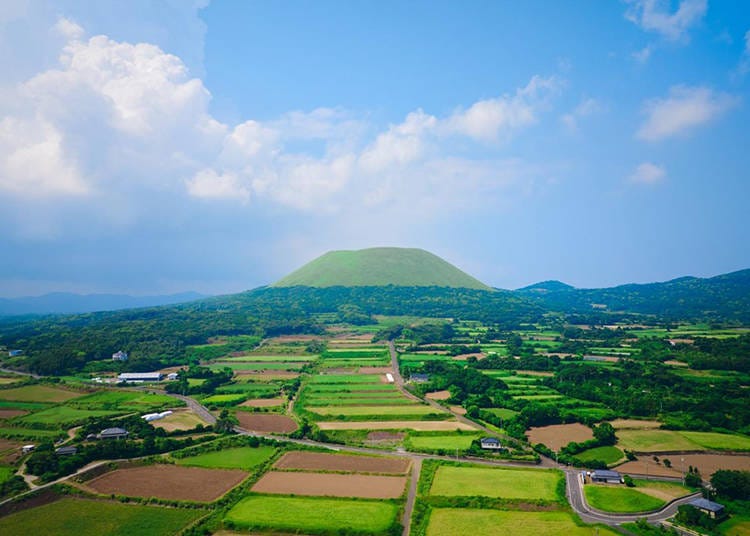
After lunch, take a short drive to Mt. Onidake, the symbol of Goto. The mountain’s gentle slopes and open grasslands give it a distinctive shape that can be recognized from both air and sea. From the summit, you can take in sweeping views of the city, the endless mountain ridges, and the cobalt-blue waters surrounding the islands—a perfect way to grasp the geography of Goto.
-
Onidake Observatory鬼岳
- Address Kamisakiyamacho, Goto, Nagasaki 853-0023
Mapcode: 334 297 104*23
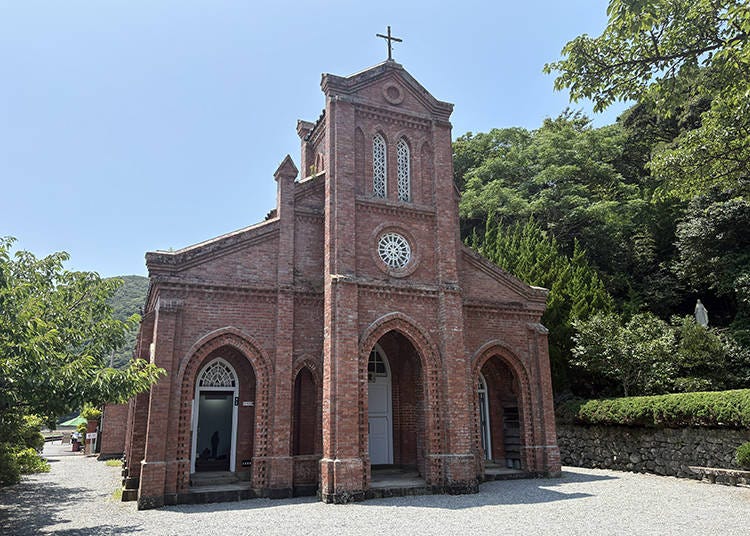
After taking in the sweeping views from Mt. Onidake and getting a sense of Goto’s landscape, it is time to begin tracing the footsteps of the hidden Christians. From Mt. Onidake, drive through the city and continue north for about 30 minutes to reach Dozaki Church.
There are around 20 churches in Goto City, all built in the late 19th century during Japan’s Meiji period. This is because Christianity had been banned by the Tokugawa shogunate in 1613, and for more than 260 years, believers were forbidden not only to build churches but even to practice their faith. Dozaki Church was the first to be constructed in Goto after the ban was lifted in 1873, symbolizing the revival of the islanders’ devotion.
Originally built of wood in 1880, the church was rebuilt in brick in 1908. Inside, you’ll find exhibits that recount the history of Christian persecution and the deep faith of Goto’s people. After exploring the church, take a short break at the small shop along the path from the parking area. It’s a pleasant spot to enjoy a local favorite, Chirin Chirin Ice Cream, or a cool drink while admiring the red-brick church and the serene bay that stretches out before you.
-
Dozaki Catholic Church堂崎天主堂キリシタン資料館
- Address 2019 Okuracho Dosaki, Goto City, Nagasaki 853-0053
Mapcode: 334 625 291*71
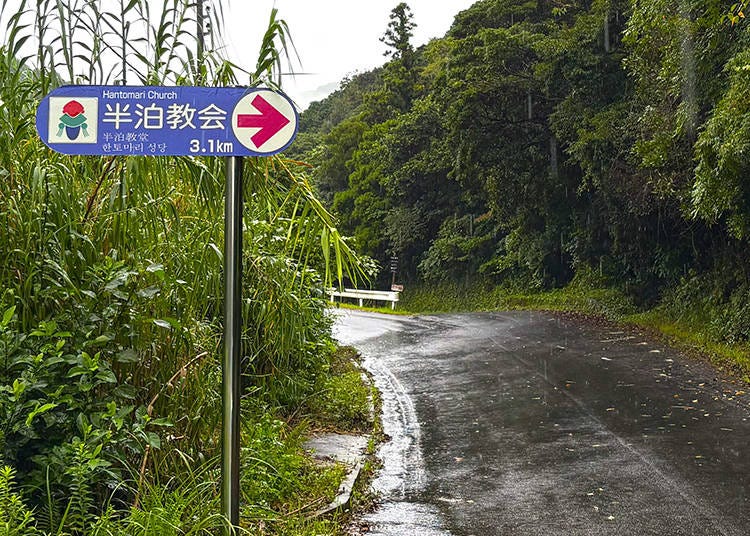
After a short break at Dozaki Church, continue north to visit a place where the hidden Christians once lived. About 15 minutes by car from the church lies Handomari Village. Leaving the main road and turning onto a narrow mountain path, you’ll find yourself on a winding road barely wide enough for a single car. The route passes through dense forest, where the light grows dim and the air feels still. Drive slowly and carefully, or consider taking a taxi if you prefer a more relaxed trip.
Just when you begin to wonder whether a village really lies ahead, the trees part to reveal a breathtaking cove surrounded by mountains; this is Handomari. In the late 18th century, hidden Christians from the Sotome region of Nagasaki crossed the sea seeking a new home and settled in this remote inlet. Because the area was too small for everyone to stay, half of them remained here while the others moved on to different parts of Fukue Island. It’s said that the name “Handomari,” meaning “half stayed,” comes from this story.
The cove is only about 500 meters across, a small patch of land embraced by forested hills. Here, the Christians built terraced rice fields on the slopes and lived closely together on the limited flat ground, protecting their faith in secret. Today, it’s about 15 kilometers from central Fukue City—a short drive now, but during the Edo period, reaching this place without roads, bridges, or modern transport must have been a serious challenge. The believers fled here to escape persecution and to practice their faith in peace.
In 1922, the villagers finally realized their dream of building a church. It was funded through donations from Ireland and built with the labor of the local Christians themselves, despite their poverty. Five years later, they gathered stones from the nearby shore to construct a windbreak wall in front of the church to protect it from typhoons. The small wooden church has been lovingly maintained by local residents for more than a century. The view of the tranquil cove likely remains much the same as it was when the first believers arrived—but now, a simple church stands where there once was none.
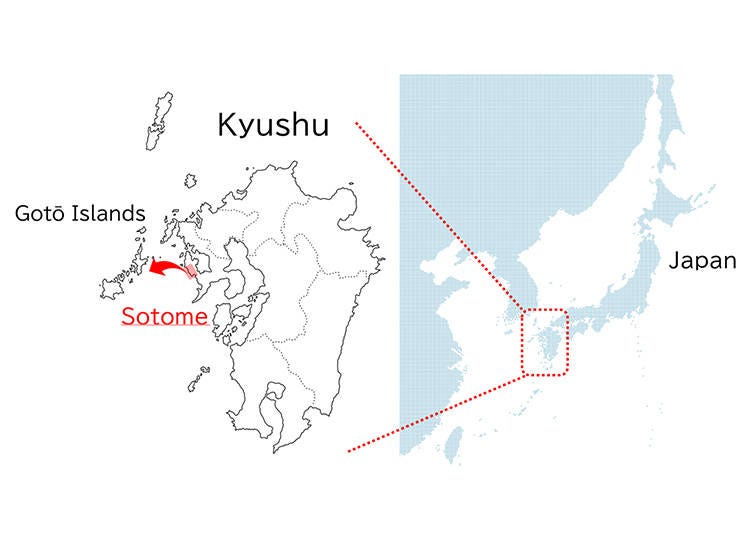
-
Handomari Catholic Churchカトリック半泊教会
- Address 1223 Hanadomari, Togicho, Goto City, Nagasaki 853-0054
Mapcode: 334 681 651*38
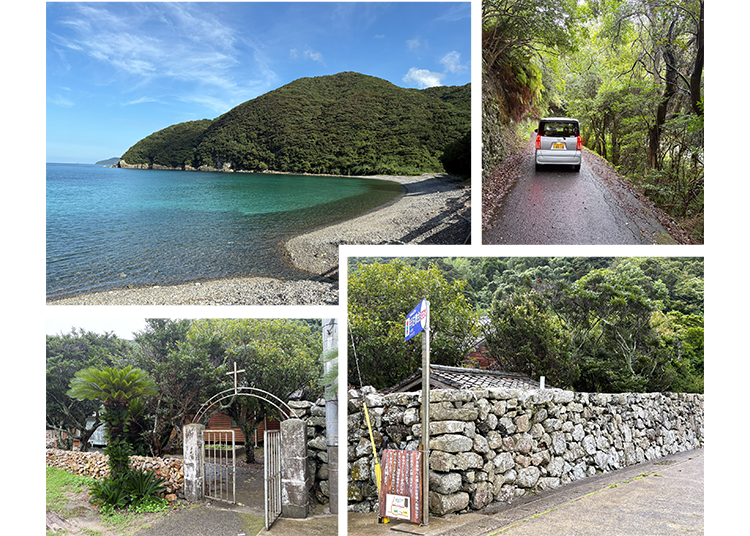
As you stroll through Handomari Village, the sun will soon begin to set. Most churches in Goto close around 4 PM, making this a good time to return to your hotel for check-in and a short rest before dinner.
Evening is the perfect opportunity to enjoy the taste of Goto’s ocean. The islands are known as one of Japan’s leading fishing grounds, famous for their large, firm, and exceptionally fresh fish. Long ago, during the Ice Age, the Goto Islands were connected to mainland Japan. When the glaciers melted about ten thousand years ago, rising sea levels flooded the lowlands, creating the 152 islands that form the Goto archipelago today.
The once-flat terrain now slopes gently beneath the sea, forming inlets and rias-style coastlines that provide ideal hiding places for fish. Adding to this bounty is the warm Tsushima Current flowing up from the south. Its fast-moving waters carry plankton and other nutrients, attracting fish that grow strong and firm in the swift currents. Together, this unique geography and ocean flow make Goto one of Japan’s richest and most diverse fishing areas.
Fish caught in the early morning are auctioned right away at the market beside the port, then delivered fresh to restaurants throughout the city. When dining in Goto, start with sashimi or sushi to appreciate the purity of the local catch. One delicacy not to miss is silver-stripe round herring, prized for its delicate texture and sweetness when eaten raw. Keep in mind, though, that it is off-season in June and July when fishing for it is closed.
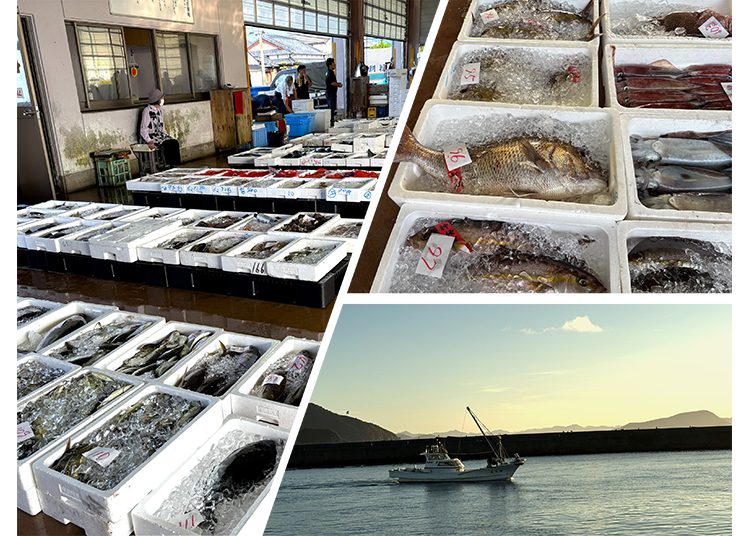
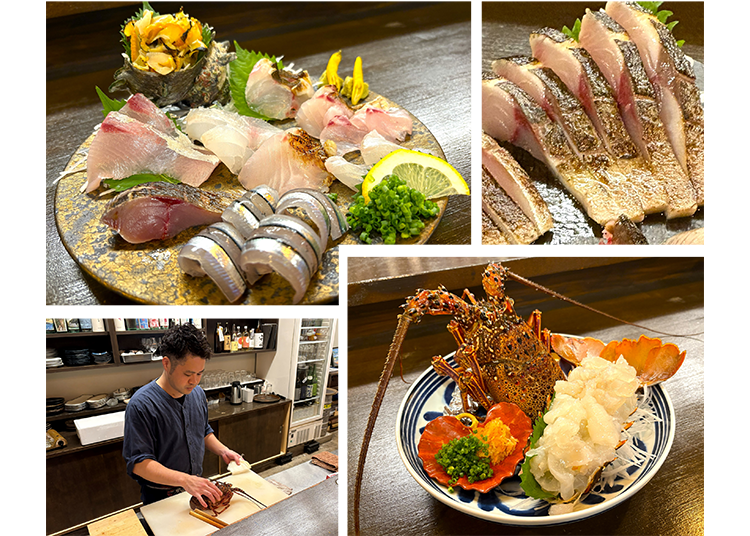
Day 1 Itinerary
- Arrive in Goto
- Visit Abunze Visitor Center
- Explore the Goto Tourism and History Museum
- Lunch: Enjoy a bowl of Goto udon
- Take in the panoramic view from Mt. Onidake
- Visit Dozaki Church and stop by a nearby shop for a short break
- Explore Handomari Village, once home to Goto’s hidden Christians
- Dinner: Savor freshly caught seafood from the Goto Islands
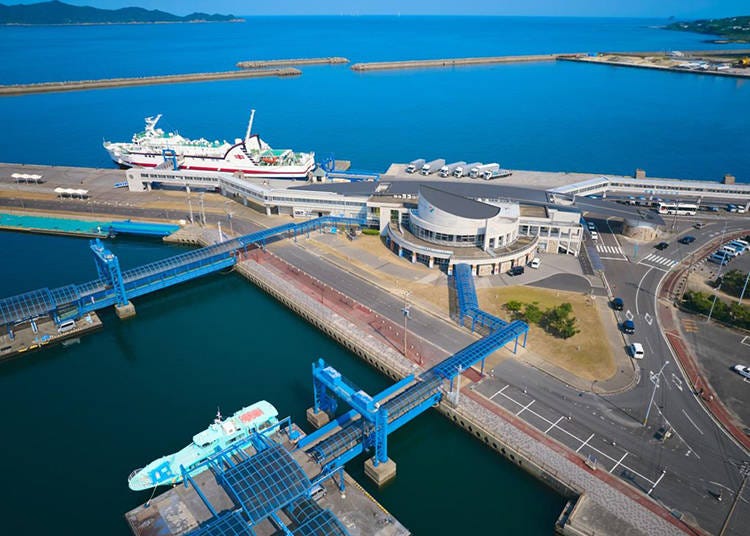
Goto Trip: Day 2 – Visit World Heritage Sites on Naru Island and Discover History and Cuisine on Fukue Island
On Day 2, make your way to Egami Village on Naru Island, part of the UNESCO World Heritage “Hidden Christian Sites in the Nagasaki Region.” Take the high-speed boat from Fukueko Terminal at 9:45 AM and you will reach Naru Island in 30 minutes, arriving at 10:15 AM. Inside Naru Terminal, head to the counter where you can rent a car or a bicycle. Because Naru Island is mostly flat, it is easy to explore by bike. If the weather is good, cycling is a great choice.
-
Fukueko Terminal福江港ターミナル
- Address 2-3 Higashihamamachi, Goto City, Nagasaki 853-0015
Mapcode: 334 417 102*08
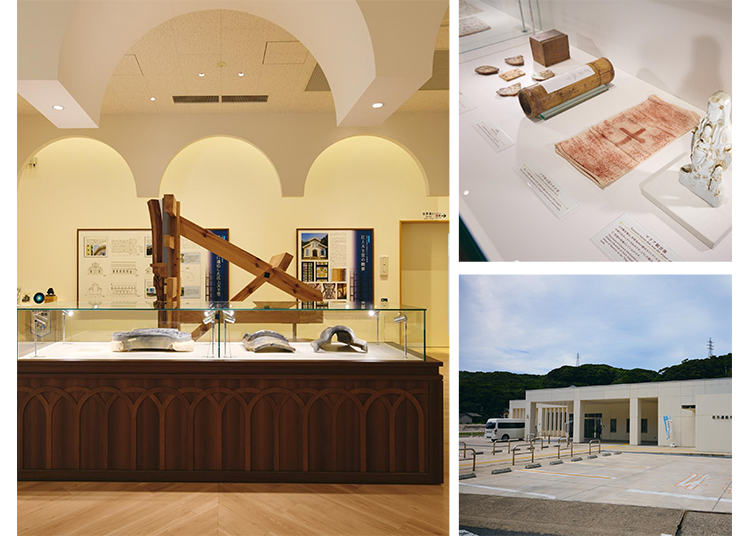
After leaving Naru Terminal, make a stop at the Naru Island World Heritage Information Center, located on the way to Egami Village. The center offers multilingual audio guides accessible on your smartphone, providing a clear and engaging introduction to the history of the hidden Christians who once lived on Naru Island.
-
Naru Island World Heritage Information Center奈留島世界遺産ガイダンスセンター
- Address 1815-3 Narumachiura, Goto, Nagasaki 853-2201
Mapcode: 411 277 221*38
After learning more at the Information Center, continue your journey toward Egami Village, a World Heritage site located about 7 kilometers ahead. Follow the coastal road through the town and past a tunnel, and you’ll reach the village in about 15 minutes by car or 30 minutes by bicycle.
Today, it’s easy to visit thanks to the tunnel completed in 1994. Before then, people had to walk more than 2 kilometers from the nearby Natsui district along a narrow mountain path only about one meter wide, with steep slopes, steps, and sharp curves—a walk that once took over an hour to complete.
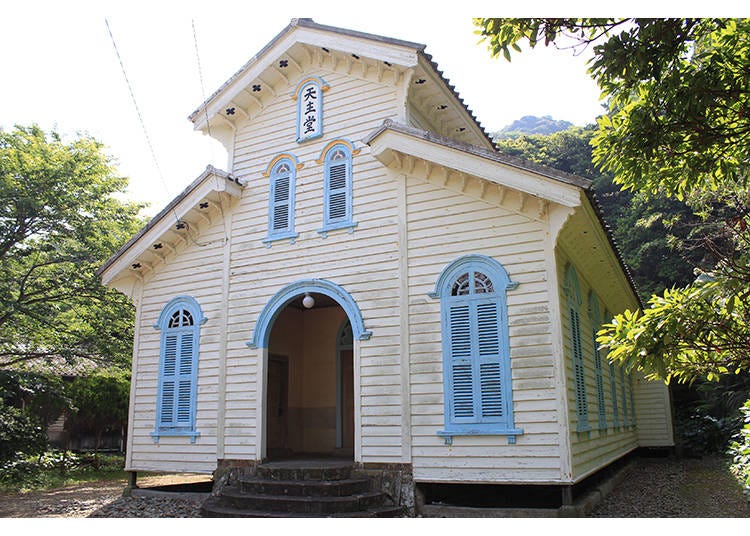
Like Handomari Village, which you visited on Day 1, Egami Village was founded by four families of hidden Christians who migrated from what is now the Sotome region of Nagasaki Prefecture. They cleared a small patch of land in a remote coastal valley, far from existing Buddhist settlements, to live and worship freely.
In 1918, after Christianity was officially recognized, the villagers combined their savings, much of it earned through silver-stripe round herring fishing, to build Egami Church. At that time, there were no tunnels, so they cleared the hillside themselves and transported building materials by boat and along steep mountain trails.
The church is a small, simple wooden structure with cream-colored walls and pale blue window frames. Because stained glass was too expensive, the villagers painted and decorated clear glass panes by hand. Like other churches in Goto, Egami Church stands as a symbol of the end of the hidden Christian period.
Note: Reservations are required to visit Egami Church. Reservations can be made via the Hidden Christian Sites in the Nagasaki Region Information Center website, kyoukaigun.jp.
-
Egami Catholic Church江上天主堂
- Address 1131 Narumachi Okushi, Goto, Nagasaki 853-2202
Mapcode: 411 363 202*30
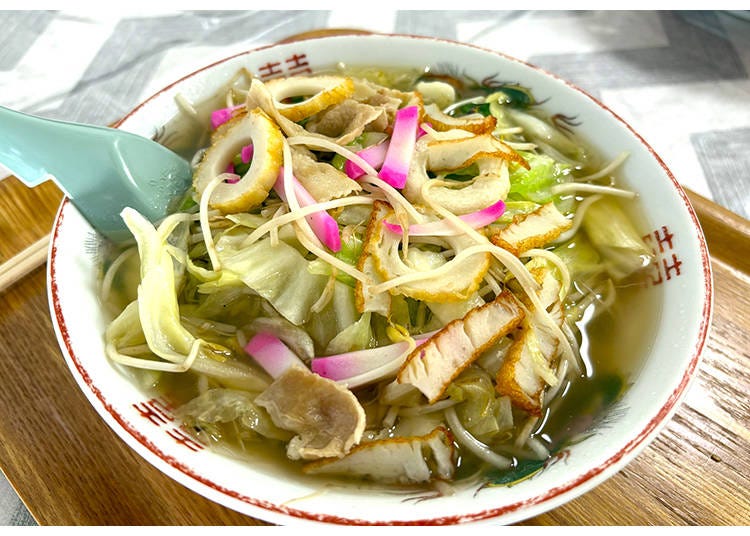
After exploring Egami Village and Egami Church, it will likely be around lunchtime. Return to Naru Island’s town center to enjoy a meal. You’ll find local diners serving Nagasaki’s famous Champon noodles, which have even appeared in Japanese films, as well as restaurants offering fresh island seafood unique to the area.
Once you’ve eaten, take a short trip to admire one of Naru Island’s most scenic spots. About 3 kilometers north of the town center, roughly 5 minutes by car or 10 minutes by bicycle, lies Miyanohama Beach. The clear blue water and smooth, wave-washed pebbles make it one of the island’s most beautiful beaches. Strolling along the path that follows the curve of the bay, you’ll feel completely removed from the noise of the city and immersed in the calm of island life.
-
Miyanohama Beach宮の浜海水浴場
- Address Narumachi Funamawari, Goto, Nagasaki 853-2204
Mapcode: 411 338 396*73
If you have a little extra time, visit the Kasamatsu Hirotomo Memorial Hall, a short walk from the beach. This museum displays works by painter Hirotomo Kasamatsu, who was born on Naru Island. The building was once an elementary school, and the entrance and first floor retain much of the original structure, giving visitors a sense of what Japanese schools once looked like in films and manga. On the second floor, you’ll find Kasamatsu’s paintings. He is known as “the painter of love and prayer,” and his works express both his deep affection for his hometown and his Christian faith.
-
Kasamatsu Hirotomo Memorial Hall笠松宏有記念館
- Address 937-1 Funamawari, Narumachi, Goto City, Nagasaki 853-2204
Mapcode: 411 338 341*77
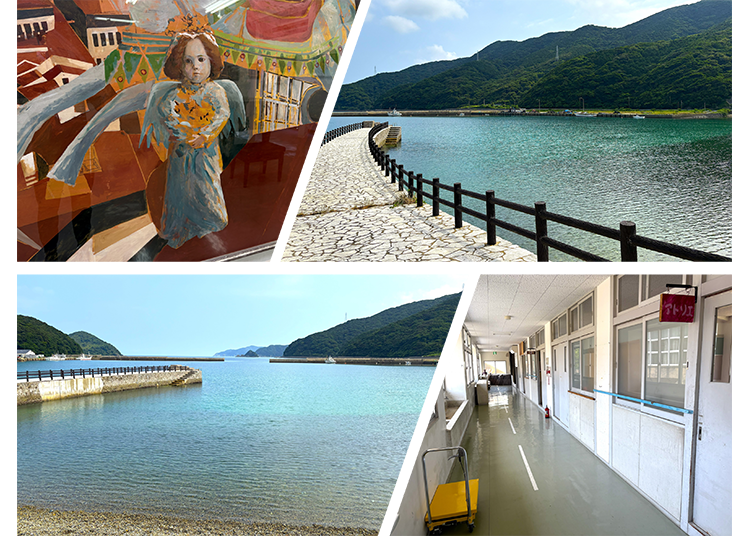
After enjoying the island’s art and beautiful beaches, return to Naru Terminal to catch the 2:20 PM high-speed boat back to Fukue Island. As you watch Naru Island gradually fade into the distance, you may feel a quiet sense of peace, reflecting on the footsteps of the Christians who once lived in hiding for their faith and later built their own churches with their own hands.
-
Naru Terminal奈留ターミナル
- Address Narumachitomari, Goto, Nagasaki 853-2203
Mapcode: 411 247 267*32
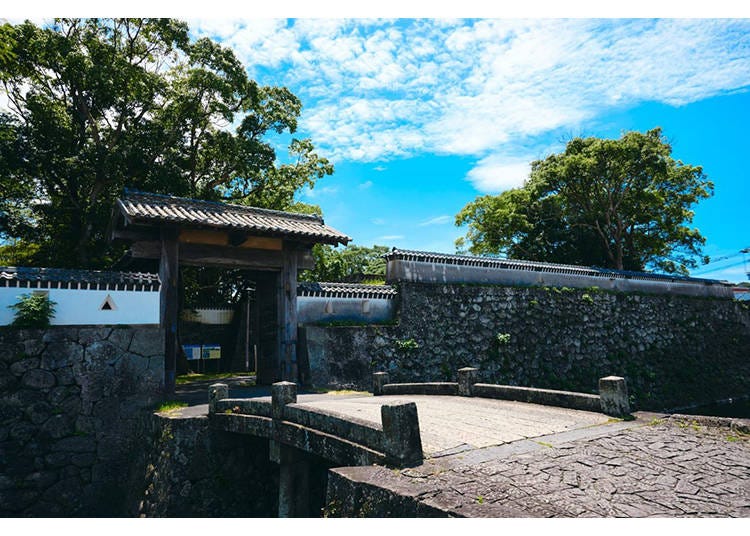
When you arrive back at Fukue Island at 2:50 PM, take some time to explore Goto City’s town center. About a ten-minute walk from Fukue Port Terminal stands Fukue Castle, once the residence of the Fukue Domain, also known as the Goto Domain.
The Goto family (formerly the Uku family) ruled the Goto Islands from the late 14th century, using Fukue Island as their base of governance for generations. Although Fukue Castle ended its role in 1872, its beautiful daimyo garden is still carefully maintained. On the site where the main keep once stood, you’ll now find the Goto Tourism and History Museum introduced on Day 1, as well as a high school whose students still pass through the castle gate each day.
Surrounding the castle is the old samurai district, known today as Samurai Residence Street. The area preserves the atmosphere of the Edo period, with tall stone walls and stately wooden gates that still reflect the dignity of the samurai era.
-
Ishida (Fukue) Castle Ruins福江城(石田城)跡
- Address 1-2 Ikedamachi, Goto, Nagasaki 853-0018
Mapcode: 334 386 715*33
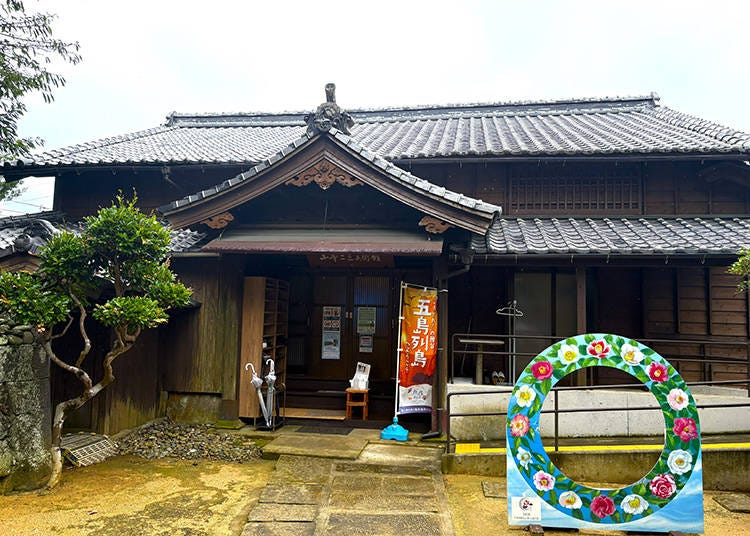
Along Samurai Residence Street, there is one museum you won’t want to miss: the Yamamoto Nizo Art Museum, dedicated to the works of animation art director Nizo Yamamoto, who was born on Fukue Island. Until his passing in 2023, Yamamoto created the stunning background art for many of Japan’s most beloved animated films, including Castle in the Sky, Grave of the Fireflies, Princess Mononoke, and The Girl Who Leapt Through Time.
Inside the museum, you can see not only the original background paintings from his long career but also a recreated version of his studio and a special room showcasing his iconic cloudscapes, praised in numerous films. A highlight of the collection is 100 Views of Goto, a series of 100 paintings that Yamamoto completed over about ten years starting in 2010. Each piece captures a scene he personally visited and observed across Goto City, including many of the places featured in this itinerary. Comparing the real-life scenery with how Yamamoto depicted it through his eyes as one of Japan’s foremost animation artists offers a uniquely inspiring experience.
-
Nizo Yamamoto Art Museum松園邸(山本二三美術館)
- Address 2-2-7 Bukeyashiki, Goto City, Nagasaki 853-0017
Mapcode: 334 386 354*23
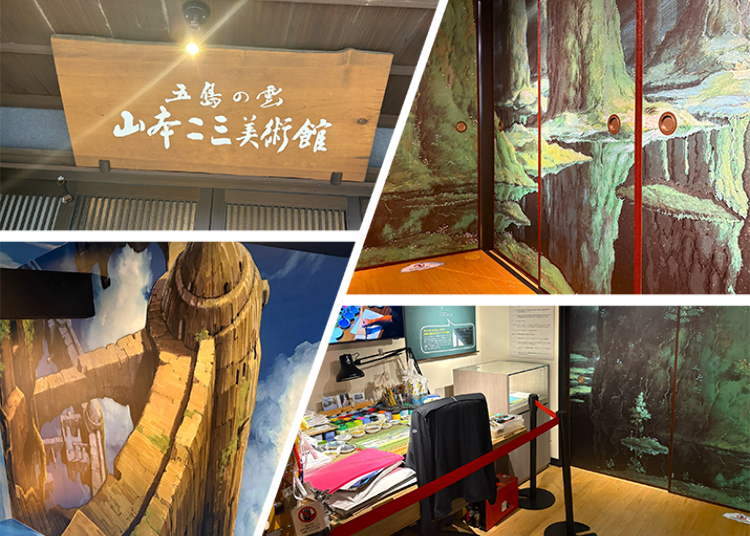
By the time you finish exploring the city center, the sun will likely be starting to set. For dinner, try one of Goto’s other specialties alongside its famous seafood—Goto beef. Cattle raising in Goto is said to date back about 2,200 years to the Yayoi period. Archaeological sites on Fukue Island have revealed cattle bones believed to be the oldest evidence of domesticated cows in Japan.
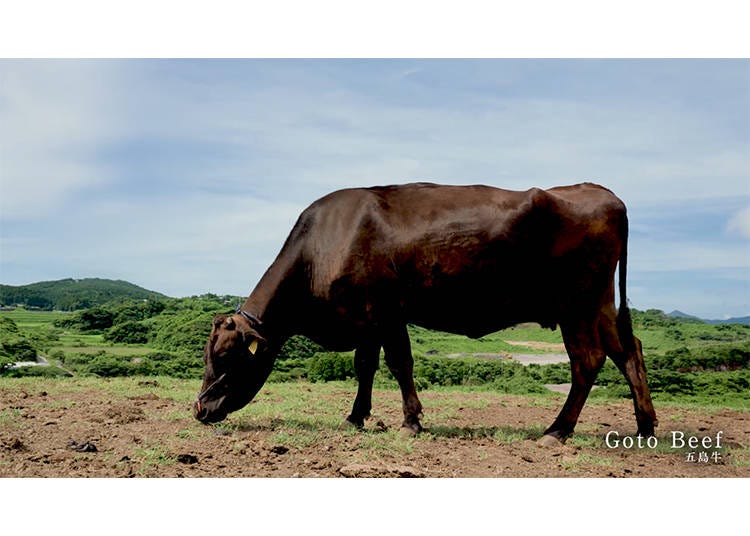
The secret behind Goto’s high-quality beef lies in its warm climate and sea breeze. The Tsushima Current that flows around the islands keeps the weather mild throughout the year, creating ideal conditions for growing grass used as cattle feed. The sea breeze that blows across the islands is rich in minerals, which settle into the soil and nourish the pastures. This results in highly nutritious grass that supports healthy and fast-growing cattle.
Cows raised on this mineral-rich grass develop tender meat with excellent marbling and flavor, earning Goto beef a reputation for exceptional quality. Because most of it is consumed within the islands or elsewhere in Nagasaki Prefecture, it rarely reaches other parts of Japan, giving it the nickname “phantom beef.”
There are many restaurants in Goto City where you can savor Goto beef in a variety of styles, from steak to yakiniku. Be sure to try this rare and premium delicacy when you visit.
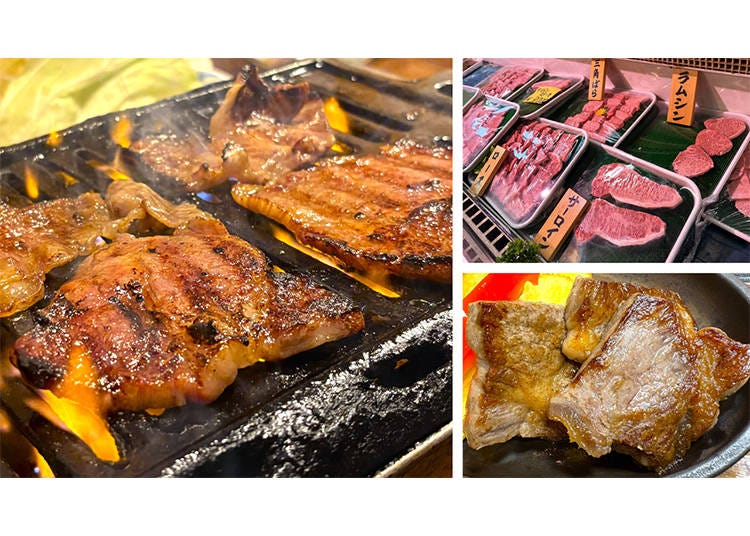
Day 2 Itinerary
- 9:45 AM – Take the high-speed boat from Fukue Port Terminal to Naru Island
- Arrange a rental car or bicycle at Naru Terminal
- Visit the Naru Island World Heritage Information Center
- Explore Egami Village and Egami Church
- Enjoy lunch in Naru Island’s town center
- Stroll along Miyanohama Beach
- Visit the Kasamatsu Hirotomo Memorial Hall
- 2:20 PM – Take the high-speed boat from Naru Terminal back to Fukue Island
- Explore Fukue Castle and the Samurai Residence Street
- Visit the Yamamoto Nizo Art Museum on Samurai Residence Street
- Savor Goto beef, the island’s prized “phantom beef”
Goto Trip: Day 3 – Tracing the Suffering and Hope Engraved on Hisaka Island
Over the past two days, you’ve explored how Goto’s hidden Christians preserved their faith in secret and built churches that marked the end of their long years of hiding. Yet, before Christianity was officially recognized in Japan, many believers suffered and sacrificed their lives. On the third day, you will travel to Hisaka Island, a World Heritage site where the stories of persecution and hope remain deeply etched into the landscape.
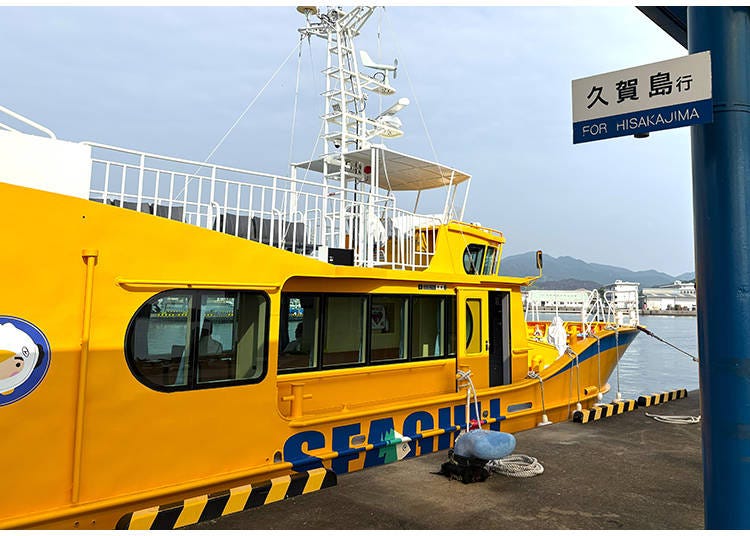
Before heading to Fukue Port Terminal to board the 9:10 AM high-speed boat to Hisaka Island, prepare a packed lunch and drinks. There are no restaurants or convenience stores on the island, and even vending machines may occasionally run empty. It is best to buy what you need on Fukue Island in advance.
Unlike the flat terrain of Naru Island, Hisaka Island is quite rugged. Getting around is easiest by rental car, which should be reserved ahead of time, as arranging one after arrival can be difficult. If you are unsure how to book, check with your hotel or the information counter at Fukue Port Terminal.
When traveling to Naru Island or Nagasaki Port, you must purchase boat tickets at the terminal before boarding. However, for Hisaka Island, passengers board first and pay the fare directly on the boat after departure. If you are uncertain about the boarding point, feel free to ask for help at the terminal’s information desk.
There are only two return boats from Hisaka Island to Fukue—at 12:30 PM and 5:10 PM—so plan accordingly. If you take the earlier boat, you will need to move a little faster through your sightseeing.
For travelers who cannot drive or find car rentals difficult, a guided day tour is also available. The tour departs from Fukue Port Terminal at 12:40 PM and returns at 5:30 PM, visiting not only Hisaka Island but also the World Heritage sites on Naru Island introduced on Day 2. The tour runs with at least two participants, and although commentary is only in Japanese, it offers an efficient and worry-free way to explore both islands using scheduled and chartered boats. Operated by the Goto Tourism Association, reservations can be made until 5 PM three days before departure. If you are interested, consult your hotel or the Fukue Port information counter for details.
The 9:10 AM high-speed boat arrives at Tanoura Port on Hisaka Island around 9:30 AM. This island is remembered as the final site of Christian persecution during the 260-year ban from 1613 to 1873. When Oura Cathedral was built in Nagasaki in 1864 for foreign residents, hidden Christian leaders visited the cathedral, declared their faith, and received teachings to bring back to their villages. Those on Hisaka Island did the same, but their faith was discovered, leading to a mass arrest known as the Roya no Sako Incident.
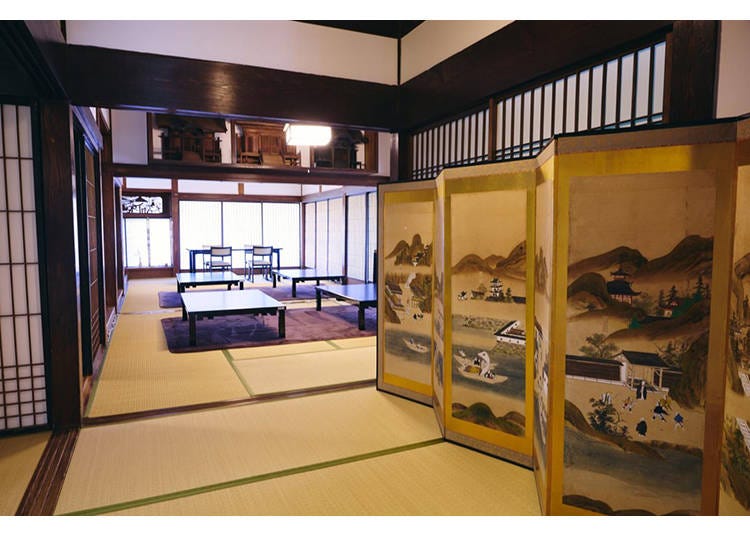
To learn about this history, head a few minutes north by car to the Hisaka Island Tourist Information Center. This center, housed in a renovated samurai residence, serves as the island’s cultural and historical hub. Exhibits and videos explain Hisaka’s geography, the persecution of hidden Christians, and the island’s World Heritage registration in 2018.
-
Hisaka Island Tourist Information Center久賀島観光交流拠点センター
- Address 103 Hisakacho, Goto, Nagasaki 853-2171
Mapcode: 334 779 296*84
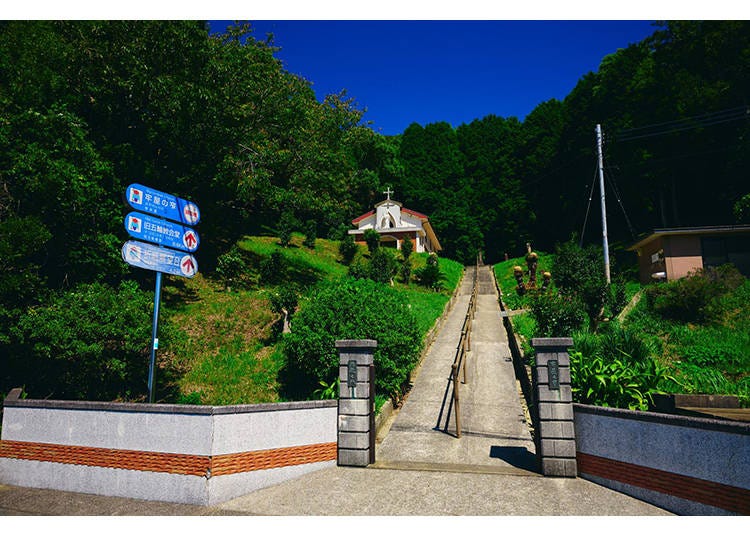
Next, visit the Roya-no-Sako Martyrdom Memorial Church, about a five-minute drive away. Here, in 1868, around 200 Christians were confined in a cell measuring only about 215 square feet (20 square meters) for eight months, enduring torture meant to force them to renounce their faith. Forty-two people lost their lives. The church now stands on the site of the former prison. Inside, a gray carpet marks the exact size of the cell, divided into sections to help visitors imagine the cramped conditions. Realizing that 200 people were once packed into such a small space is deeply moving.
Around the same time, similar persecutions took place across the Goto Islands. Foreign consuls and missionaries in Japan protested to the Meiji government, and international pressure eventually led to the legalization of Christianity in 1873. The countless lives lost in Goto must never be forgotten.
-
Roya-no-Sako Martyrdom Memorial Church牢屋の窄殉教記念聖堂
- Address Hisakacho, Goto, Nagasaki 853-2171
Mapcode: 411 150 647*14
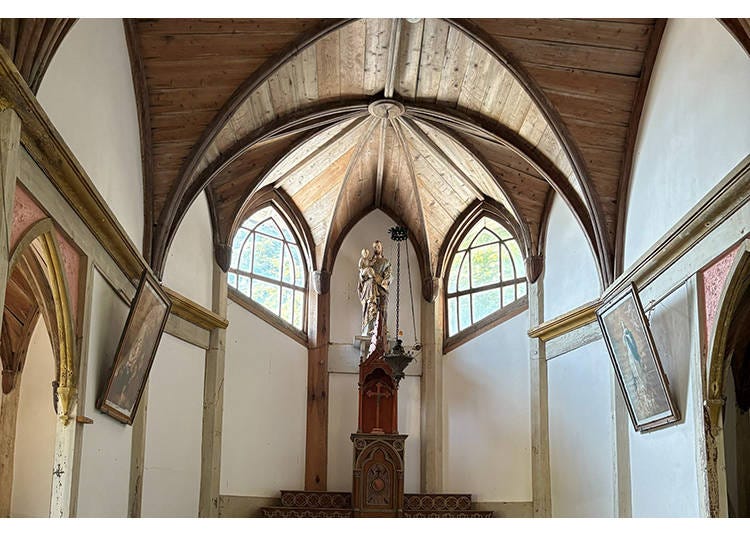
Around the same time, similar persecutions took place across the Goto Islands. Foreign consuls and missionaries in Japan protested to the Meiji government, and international pressure eventually led to the legalization of Christianity in 1873. The countless lives lost in Goto must never be forgotten.
Thirteen years after the persecution ended, in 1881, the first church on Hisaka Island was built—a small wooden structure with the exterior of a Japanese home and a Gothic-style vaulted ceiling crafted from wood. Since stained glass was too expensive, the villagers placed colored paper between panes of glass to create the same effect. The church stood on a hill near Tanoura Port but was later damaged by sea winds and became too small for the growing congregation. In 1931, it was dismantled and relocated to the Gorin district, home to many descendants of hidden Christians. This is today’s Former Gorin Church, now a registered World Heritage site.
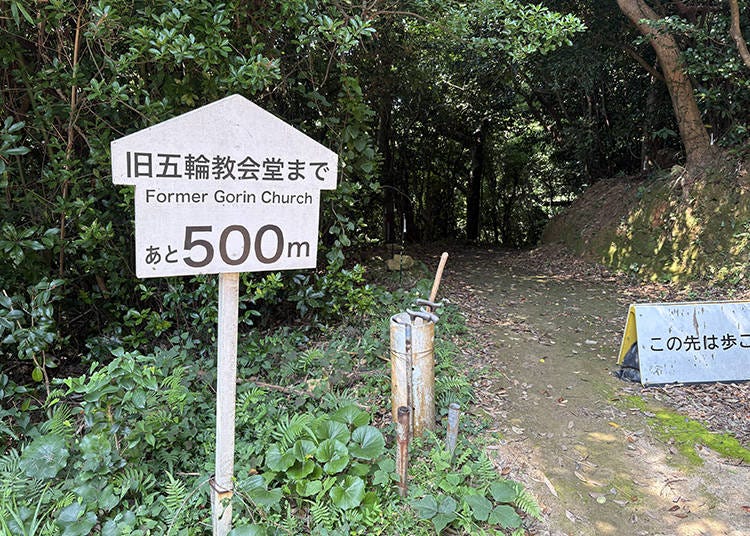
From the Roya-no-Sako Memorial Church, it takes about 30 minutes by car to reach the Gorin area. As the road narrows and winds deeper into the hills, you might wonder if you’re heading in the right direction, but don’t worry—this is part of the island’s charm. The final section of the route must be done on foot, about a 15-minute walk down a narrow mountain path from the parking area.
The church you’ll find there was carefully reconstructed piece by piece by villagers and used until 1985, when a new building was constructed beside it. Built in 1881, the Former Gorin Church is Japan’s second-oldest wooden church after Oura Cathedral and the first built on Hisaka Island after the persecution. From the uphill path leading back to the parking lot, you can look down over the calm sea and see the modest wooden church below—a small, humble structure that leaves a lasting impression.
Note: Reservations are required to visit the Former Gorin Church. Reservations can be made via the Hidden Christian Sites in the Nagasaki Region Information Center website, kyoukaigun.jp.
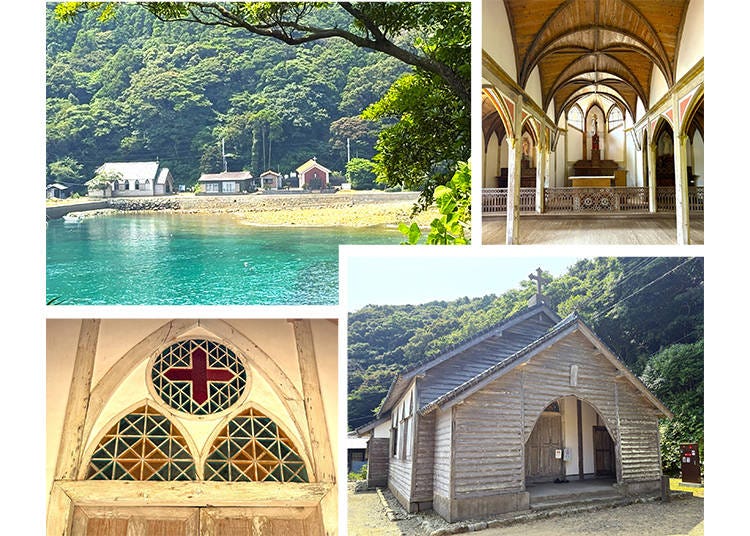
-
Former Gorin Church旧五輪教会堂
- Address 993-11 Warabicho, Goto City, Nagasaki 853-2172
Mapcode: 411 153 801*51
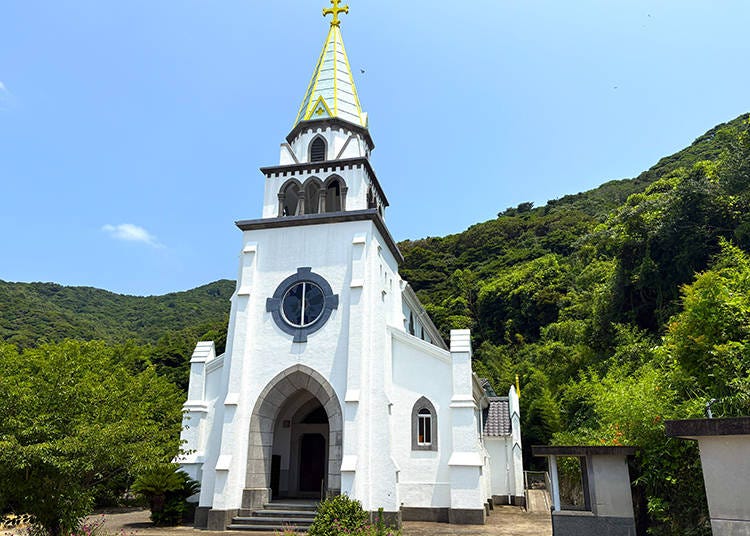
Once you return to the parking area, make one final stop at the site where the first church on Hisaka Island once stood. Drive for about 40 minutes along the same road back toward Tanoura Port, and just before reaching the harbor, you will find Hamawaki Church on a hill overlooking the sea.
Built in 1931 after the wooden Former Gorin Church was relocated to Gorin Village, Hamawaki Church is easily recognized by its tall white bell tower. Its graceful form can be seen from ships departing Hisaka Island, and every vessel that passes through Tanoura Port, the gateway to the island, will glimpse its shining silhouette.
Once a humble wooden church and now a bright white landmark, Hamawaki Church stands as a symbol of faith and freedom, marking the end of the era when Christians were forced to hide their beliefs.
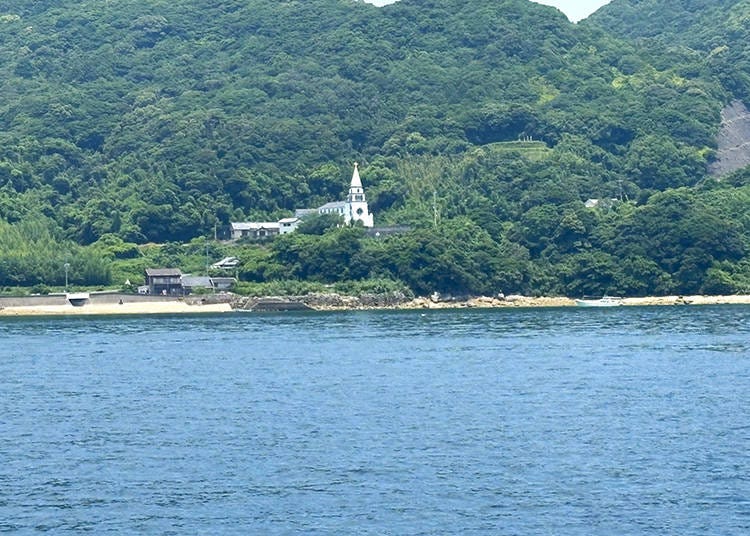
-
Hamawaki Catholic Churchカトリック 浜脇教会
- Address 263 Tanouracho, Goto, Nagasaki 853-2173
Mapcode: 334 717 072*20
- 9:10 AM: Take the high-speed boat from Fukue Port Terminal to Hisaka Island
If you do not have a driver’s license or find it difficult to reserve a rental car, guided tours are also available and offer a convenient alternative. - Visit Hisaka Island Tourist Information Center
- Visit the Roya no Sako Martyrdom Memorial Church, a historical site of Christian persecution
- Visit Gorin Village and the Former Gorin Church
- Visit Hamawaki Church
- Return to Fukue Island on the 12:30 PM or 5:10 PM high-speed boat
If you plan to take the 5:10 PM boat, be sure to prepare lunch and drinks in advance, as there are no restaurants on Hisaka Island. Due to the island’s steep terrain, reserving a rental car beforehand is strongly recommended.
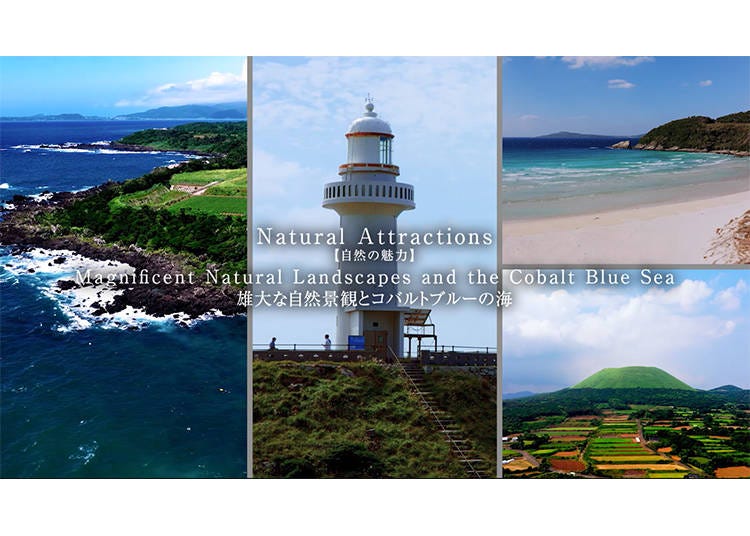
Goto Trip: Day 4 – Discover Goto’s Majestic Nature and Find the Perfect Souvenir
On your final day in Goto, take time to soak in the island’s grand natural beauty. From beaches said to be the most beautiful in Japan to a lighthouse standing boldly on a seaside cliff, there are still plenty of breathtaking sights waiting to be explored. Rent a car and head west toward Osezaki Lighthouse, stopping along the way to enjoy some of Goto’s most scenic spots.
If you’d like to see more churches in Goto, we recommend visiting Mizunoura Church on the island’s northern side. Known as Japan’s largest wooden church, its tall spire rising into the clear blue sky creates a picture-perfect scene and makes it one of Goto’s most iconic landmarks.
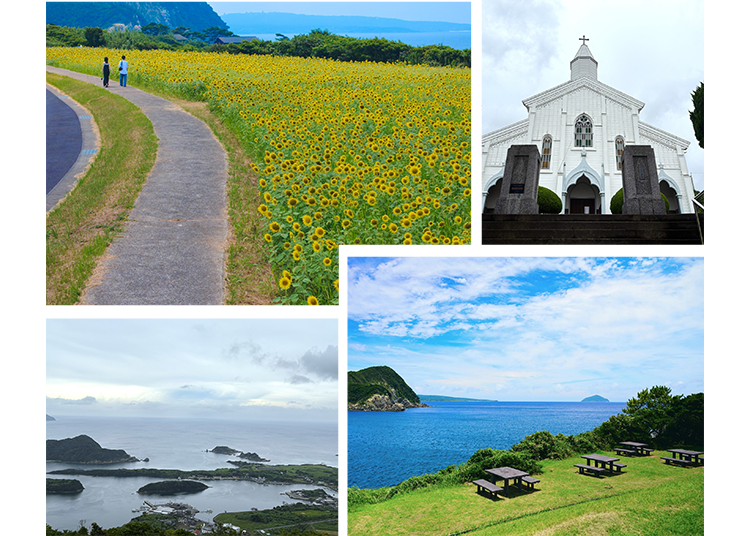
-
Mizunoura Catholic Churchカトリック水ノ浦教会
- Address 1643-1 Kishikumachi Kishiku, Goto, Nagasaki 853-0701
Mapcode: 334 584 417*65
Afterward, drive about five minutes to Gyogasaki Park, where an open, unobstructed view stretches across the sea and surrounding islands. The sight of the setting sun turning the sky, ocean, and islands deep shades of red as it sinks into the western horizon is truly breathtaking.
-
Gyogasaki Park魚津ケ崎公園
- Address Kishikumachi Kishiku, Goto, Nagasaki 853-0701
Mapcode: 334 584 417*65
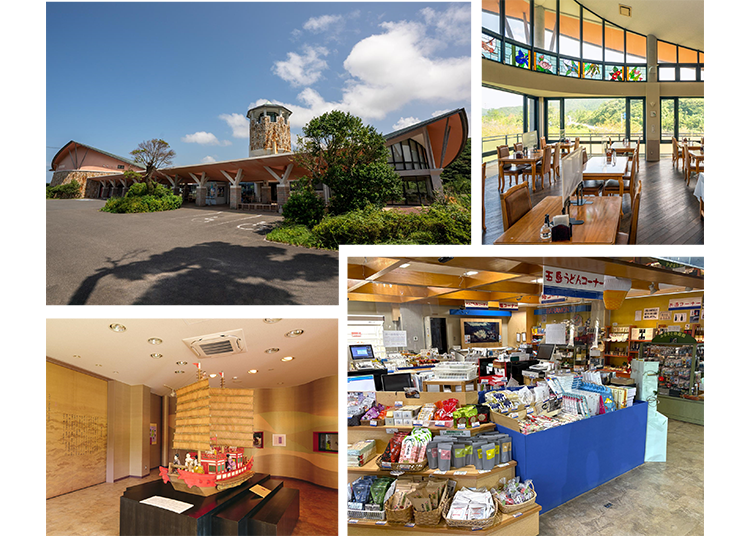
Continue west from Gyogasaki Park and you’ll arrive in the Miiraku district, once known as Japan’s final port of call for ships departing for Tang China. Here, you’ll find the Michi-no-Eki Kentoshi Furusato Hall, a roadside rest area where you can learn about the history of the Japanese envoys who sailed to China centuries ago. The facility also features a restaurant serving local specialties such as Goto beef and Goto udon, making it a great place to stop for lunch or to pick up some souvenirs.
-
Michi-no-Eki Kentoshi Furusato Hall道の駅 遣唐使ふるさと館
- Address 3150-1 Miirakumachi Hamanokuri, Goto, Nagasaki 853-0601
Mapcode: 334 548 152*47
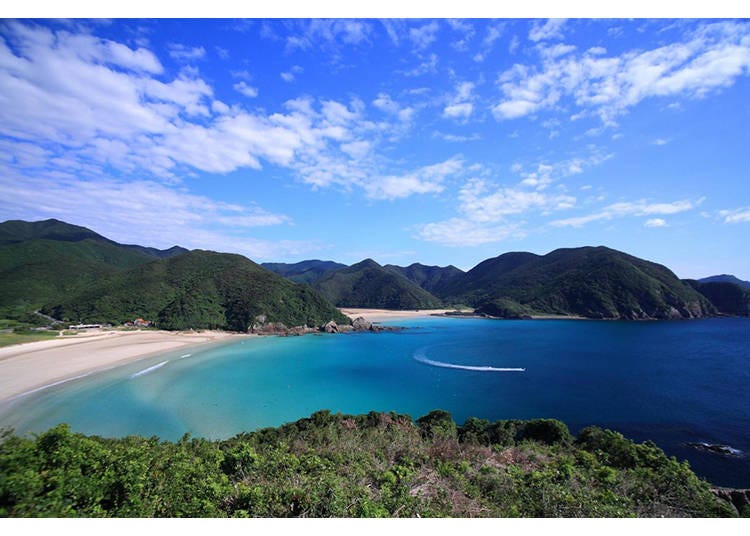
On the way to Osezaki Lighthouse, you will find Takahama Beach, often described as one of the most beautiful in Japan. The cobalt-blue sea stretches endlessly to the horizon, while the shallows glow with a crystal-clear emerald green that is truly breathtaking.
At low tide, the sand reveals delicate ripple marks, formed by the movement of waves as they advance and retreat. Whether you visit during the summer swimming season or outside it, the beach is well worth the trip for its stunning scenery. The view from the shore is impressive, and the nearby Gyoran Kannon Observation Deck offers a sweeping view of the coastline from above.
-
Takahama Beach高浜海水浴場
- Address Miirakumachi Kaitsu, 853-0604
Mapcode: 334 424 587*21
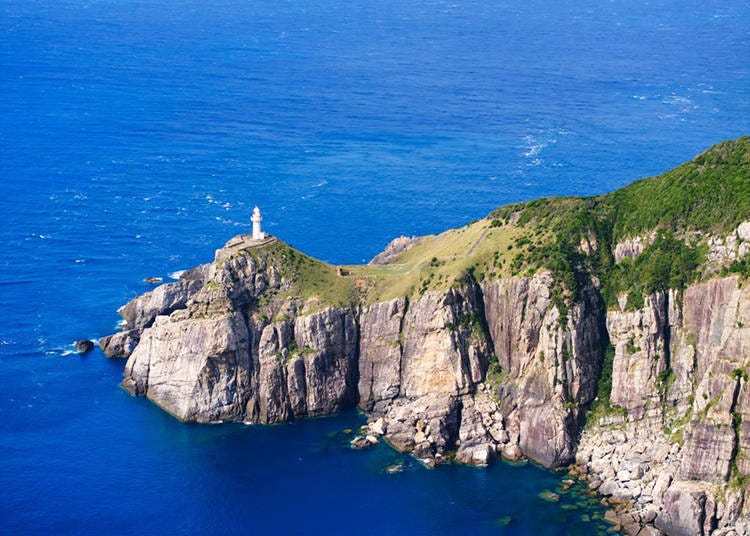
After about a 50-minute drive from Takahama Beach, you will reach the Osezaki Lighthouse Observation Point, located at the westernmost point of Fukue Island. The white lighthouse stands on a steep cliff overlooking the vast blue sea, and the contrast between the white structure and the ocean is strikingly beautiful.
If you wish to see it up close, park your car and walk along the coastal trail leading down from the observatory. The walk takes about 20 minutes each way, following a path built along the cliffside. Up close, the lighthouse appears far larger and more impressive than it does from a distance. From the tip of the peninsula, you can enjoy sweeping, unobstructed views of the open sea, with nothing but the ocean stretching westward toward the Asian continent. It is easy to imagine the mix of fear and hope felt by those who once departed from this very shore bound for China.
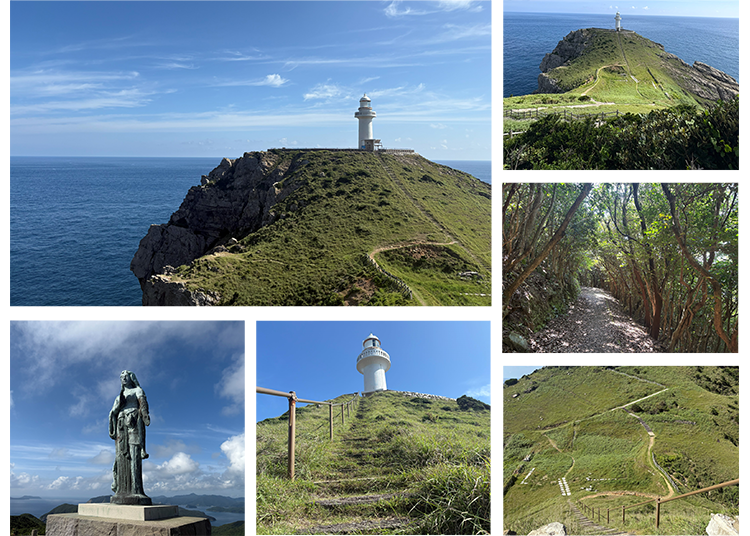
We highly recommend visiting the lighthouse to take in this unforgettable view, but keep in mind that the return walk up the cliff takes around 40 minutes. Allow about an hour in total for the round-trip walk and sightseeing.
-
Osezaki Lighthouse Observation Point大瀬崎灯台展望台
- Address Tamanouramachi Tamanoura, Goto, Nagasaki 853-0411
Mapcode: 917 403 185*74
If you are short on time or prefer a gentler option, stop at the nearby Statue of the Goddess of Prayer observation deck. From there, you can look westward to see Osezaki Lighthouse and the vast sea below, or turn east to admire the rugged mountains and intricate coastline of Fukue Island.
-
Goddess of Prayer祈りの女神像
- Address Tamanouramachi Tamanoura, Goto, Nagasaki 853-0411
Mapcode: 917 403 543*03
There are still many wonderful places to stop by, but it is almost time to return to the airport or ferry terminal. Before you leave, here are a few great places to shop for souvenirs from Goto.
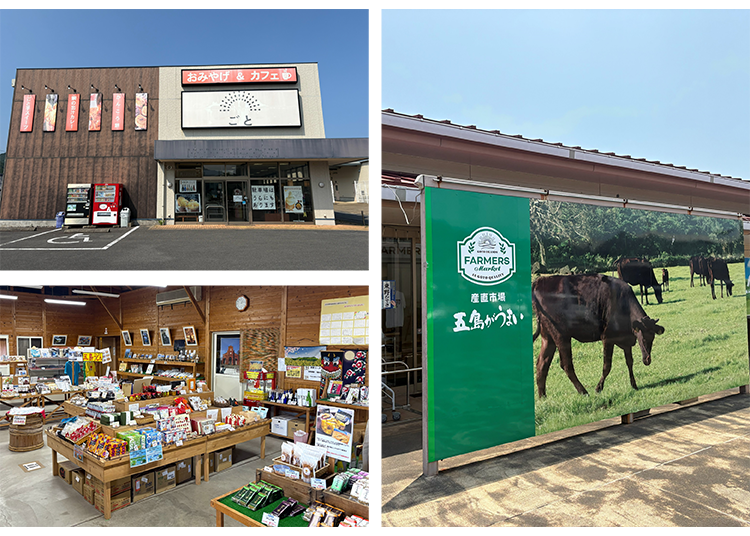
In addition to the Michi-no-Eki Kentoshi Furusato Hall in the Miiraku district introduced earlier, near Goto City’s center you will find Goto, a shop and café known for its original products made with locally grown sweet potatoes. The Sanchoku Ichiba Goto ga Umai Market, operated by the Japan Agricultural Cooperative of Goto, also offers a wide selection of fresh local produce and meats.
-
Sanchoku Ichiba Goto ga Umai Market産直市場 五島がうまい
- Address 2450-1 Komoribuchicho, Goto, Nagasaki 853-0041
Mapcode: 334 383 690*48
If you are staying at a hotel on the southern side of the island, stop by the Goto Tsubaki Bussankan, located in front of the beautiful Kojushi Beach, where white sand meets emerald-green waters. The shop sells locally made natural products such as salt slowly produced from Goto’s seawater and camellia oil, all crafted with care to preserve their natural flavor and quality.
-
Goto Tsubaki Bussankan五島椿物産館
- Address 1255-1 Masudacho, Goto, Nagasaki 853-0027
Mapcode: 334 230 893*47
Finally, before you depart, you can also purchase souvenirs at Goto Fukue Airport or Fukueko Terminal, making it easy to take a little piece of Goto with you on your journey home.
-
Goto Fukue Airport福江空港
- Address 2183 Kamiozucho, Goto, Nagasaki 853-0042
Mapcode: 334 295 671*08
- Visit Mizunoura Church
- Stroll through Gyogasaki Park
- Stop by Michi-no-Eki Kentoshi Furusato Hall in the Miiraku district
- Enjoy Takahama Beach and the view from Gyoran Kannon Observation Deck
- Visit Osezaki Lighthouse Observatory (allow about one hour on foot round trip)
- Shop for souvenirs before departure
- Depart Goto from Goto Fukue Airport or Fukue Port Terminal
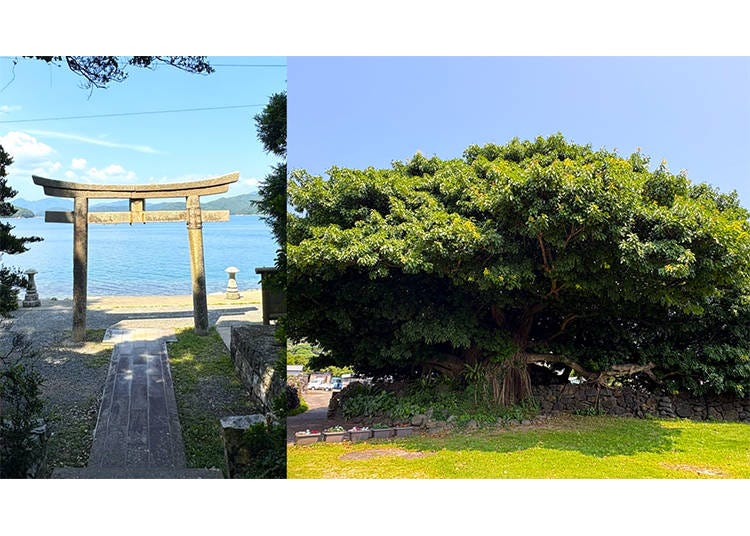
Goto City: An Undiscovered Paradise Where Faith and Nature Unite
Blessed with breathtaking cobalt-blue seas, dramatic cliffs, and centuries of hidden Christian history, Goto City is one of Japan’s true hidden treasures. Here, you can savor the rich flavors of Goto beef and Goto udon, while also walking in the footsteps of those who once protected their faith in secret. It is a journey that fills the heart with quiet awe and lasting inspiration.
Every moment on these islands reveals a deeper connection between nature and history. The Goto Islands are places of prayer and grace, where stories of perseverance and beauty intertwine. Set out to uncover the true spirit of this serene paradise and experience for yourself the timeless charm of Goto.
- Area
- Category
*Prices and options mentioned are subject to change.
*Unless stated otherwise, all prices include tax.
Popular Tours & Activitiess
-
Ad

Just 2 Hours from Tokyo! Enjoy Ibaraki’s Breathtaking Ocean Views, Flowers & Autumn Leaves on Private Tours
-
Ad
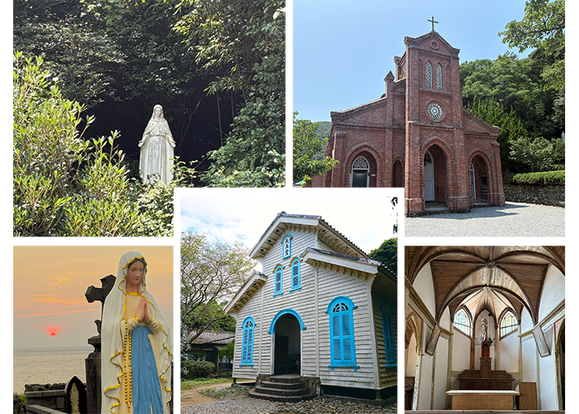
Unraveling the History of the Hidden Christians from Goto City,Nagasaki Prefecture, located in Kyushu
by: Yohei Kato
-

Fine Dining on Rails? Japan Announces Stunning NEW 'Laview' Restaurant Train
-

10 Must-Buy Cosmetics at Don Quijote (2025 Edition)
-

(12% OFF KKday Coupon) Mt. Fuji Autumn Leaves, Powder Snow & More! 15 Best Tours to Experience Japan in Fall & Winter
-
Ad

Get Your Perfect Custom Suit at GINZA Global Style PREMIUM Ginza Honten: Choose from 5,000 Fabrics, Starting at 26,400 Yen (incl. tax)!
Inspiration for Accommodations
-
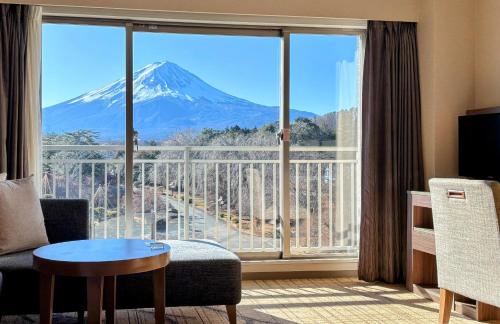
Enjoy Mt. Fuji from the Comfort of Your Room! Recommended Ryokan with Mt. Fuji View
-

Stay Near the Cherry Blossoms! Hotels for Cherry Blossom Viewing in Tokyo
-

Family-Friendly Hotels with Free Shuttle to Disneyland: Convenient Access for a Magical Stay
-
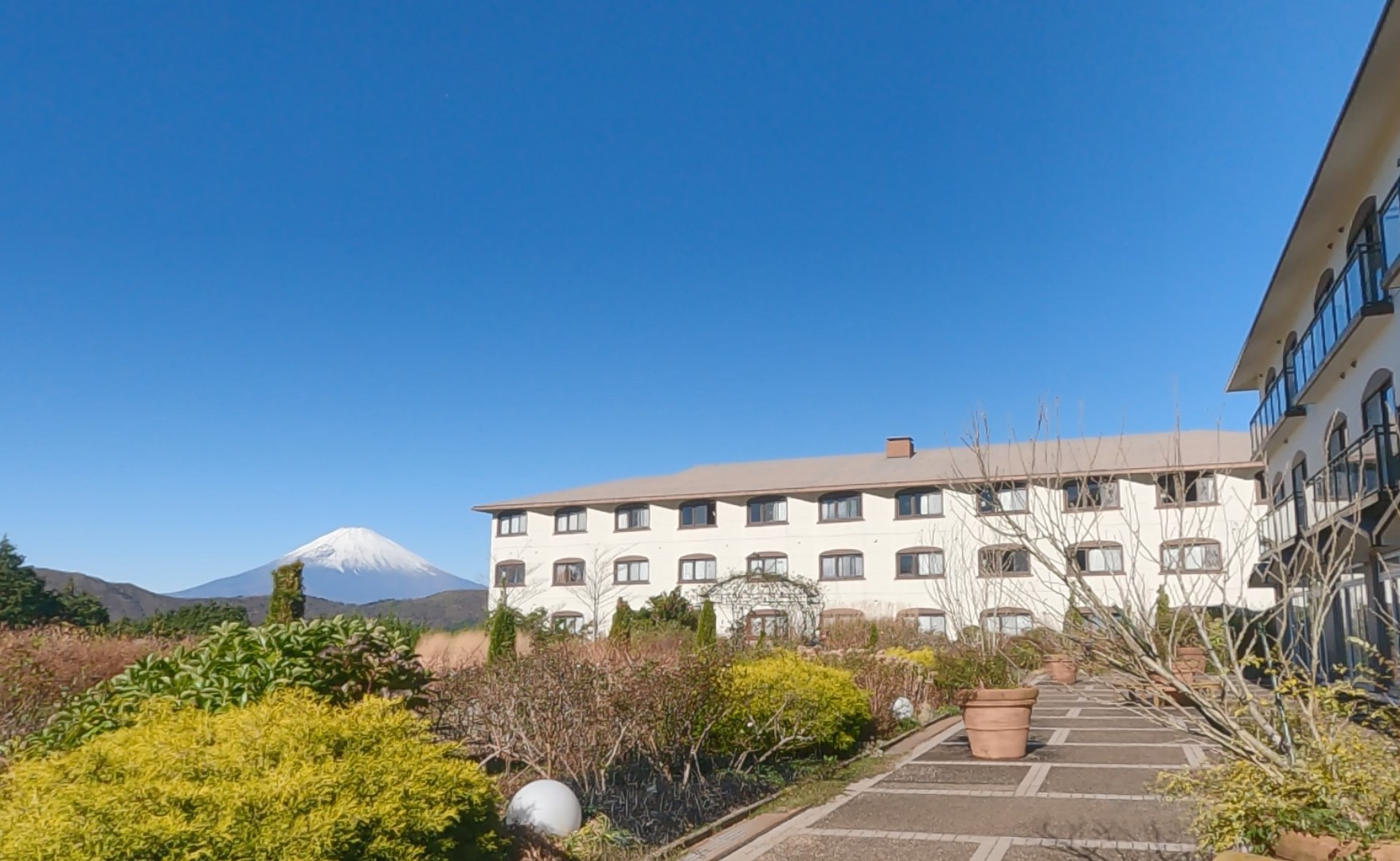
Top Ranked Hakone Hotels with Mt. Fuji View: Enjoy Stunning Scenery from Your Private Space
-
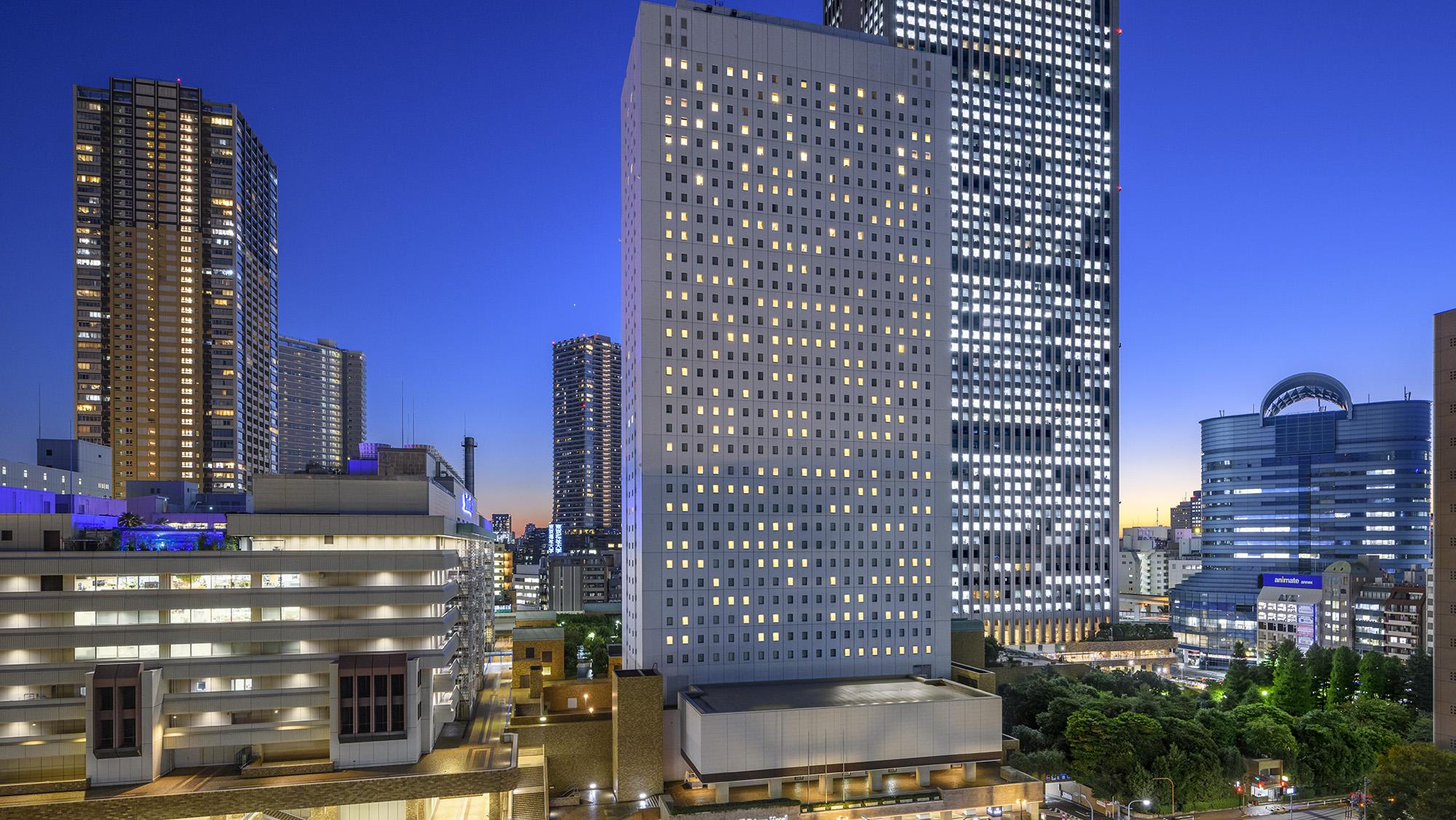
Convenient Tokyo Hotels with Airport Shuttle: Ideal for Families and Heavy Luggage
-

Stunning Tokyo Tower View Hotels: Enjoy Spectacular Scenery from Your Private Space
-

Convenient Asakusa Hotels with Kitchens: Ideal for Extended Family Visits
-

Experience Luxury: Hakone's 10 Best Five-Star Accommodations
-
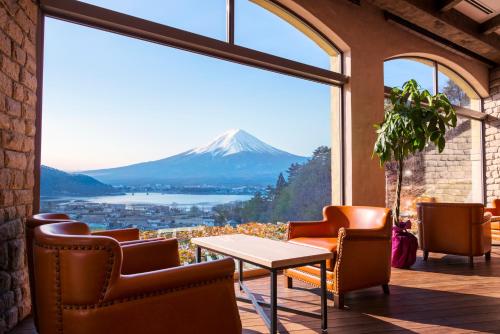
Enjoy Mt. Fuji Autumn Leaves! Top Hotels Near the Popular Autumn Leaves Corridor
-

Experience Hakone Fall Foliage from Your Room with Stunning Views
-

Spending Wonderful Time Alone in Shibuya - Free Cosmetics and a Hundred-Yen Bus!
-

An informative and engaging tour of Iwami Ginzan Silver Mine-a UNESCO World Heritage Site
-

Instagram Evergreen: Japan’s Top 10 World Heritage Sites and National Treasures!
by: Lucio Maurizi
-

Kichijoji – Explore Tokyo’s Top-Rated Stylish Suburb in Half a Day!
-

Tokyo Train Map: Your Essential Guide to Subways and Railways
-

Tokyo Station Top 10 Sweets Ranking!
- #best ramen tokyo
- #what to buy in ameyoko
- #what to bring to japan
- #new years in tokyo
- #best izakaya shinjuku
- #things to do tokyo
- #japanese nail trends
- #what to do in odaiba
- #onsen tattoo friendly tokyo
- #daiso
- #best sushi ginza
- #japanese convenience store snacks
- #best yakiniku shibuya
- #japanese fashion culture
- #best japanese soft drinks












